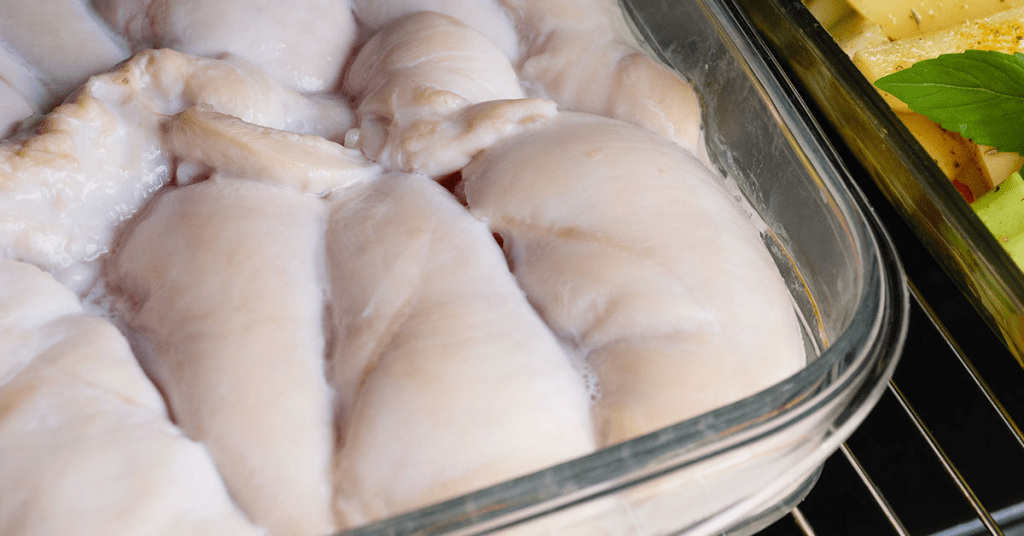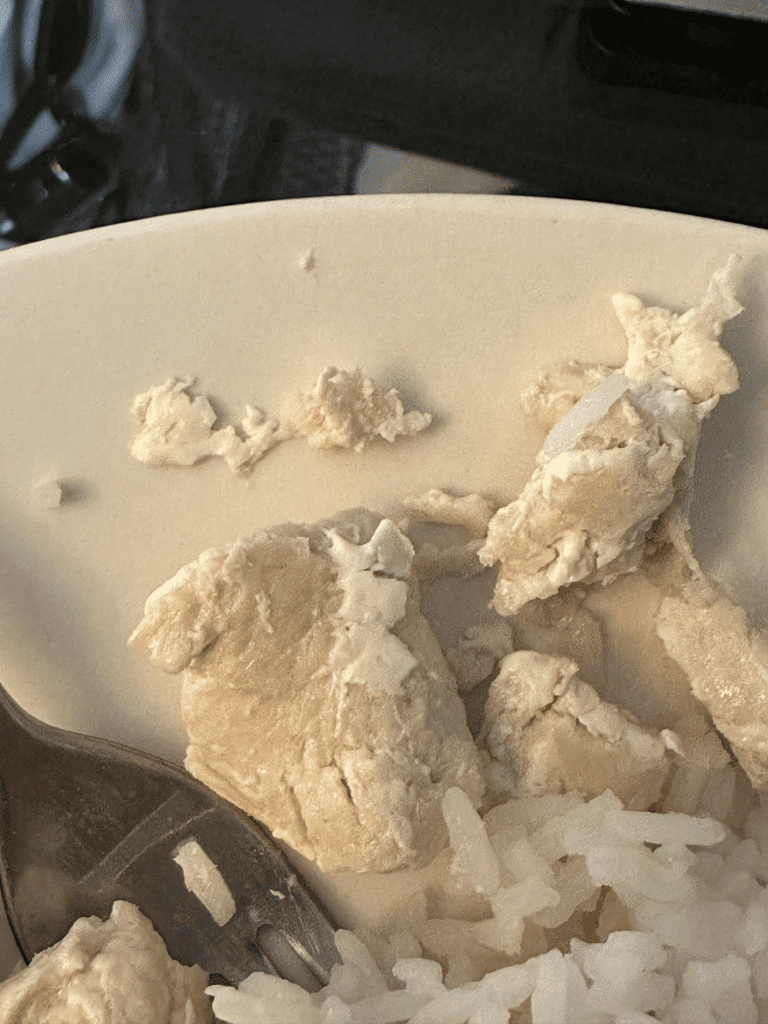If you’ve ever cooked chicken and noticed a strange, white, gel-like substance seeping out of the meat, you’re not alone. This so-called “white goo” has left many home cooks puzzled, raising questions like: What is it? Is it safe to eat? Can it be avoided? Let’s unravel the science behind this phenomenon and learn how to minimize it while cooking chicken.
What Is the White Goo on Chicken?

The white goo you see when cooking chicken is a harmless combination of water and protein naturally present in the meat. As the chicken heats up, the muscle fibers contract, squeezing out water and dissolved proteins. These proteins coagulate, or solidify, under heat, forming the white, gelatinous substance.
Think of it like an egg white: initially a clear liquid, it turns solid and opaque when cooked. The same process is at work here, except it’s happening inside the chicken meat.
Rest assured, the white goo is entirely safe to eat. It’s not a chemical or an additive, just a natural byproduct of the cooking process.
Why Does the White Goo Form?
To understand why this happens, let’s look at the science of chicken cooking:
- Muscle Contraction: When chicken is exposed to heat, its muscle fibers tighten, forcing out water and proteins.
- Protein Denaturation: These proteins react to heat, coagulating into a gel-like texture.
- Expelled Juices: The liquid released is simply the meat’s natural juices transforming due to heat exposure.
This process is completely normal and happens with other meats as well, although it’s more noticeable in chicken due to its light color and higher water content.
Does the Type of Chicken Matter?
You may have noticed that the white goo is more prominent in certain types of chicken. For instance, frozen chicken tends to produce more of it than fresh chicken. Why is that?
- Frozen Chicken: Ice crystals that form during freezing can damage the chicken’s muscle fibers, causing it to release more liquid when cooked.
- Pre-Processed Chicken: Commercially processed chicken, especially pre-packaged or frozen, often contains added water or brine to enhance flavor and juiciness. This can increase the amount of liquid expelled during cooking.
While it might be more noticeable in some chicken products, the presence of white goo doesn’t mean the chicken is of lower quality.
How to Reduce the White Goo
Even though the white goo is harmless, it can look unappetizing. Luckily, there are ways to minimize its appearance:
- Thaw Chicken Properly: If you’re cooking frozen chicken, thaw it slowly in the refrigerator instead of using a microwave. This reduces muscle fiber damage and limits liquid release.
- Pat It Dry: Before cooking, use a paper towel to remove excess surface moisture. This helps reduce the amount of goo that forms.
- Use High Heat: Cooking chicken over high heat, such as grilling or searing, locks in juices and minimizes the amount of liquid expelled.
- Avoid Overcooking: Overcooked chicken releases more liquid, so use a meat thermometer to ensure it reaches the proper internal temperature of 165°F (74°C).
- Opt for Fresh Chicken: When possible, choose fresh chicken over frozen to reduce the likelihood of seeing excessive white goo.
Is the White Goo a Sign of Poor-Quality Chicken?

Contrary to popular belief, the white goo isn’t an indicator of low-quality chicken. It’s simply a natural reaction to heat, influenced by how the chicken was processed and stored.
Some commercially frozen chicken products retain more water due to added solutions or the freezing process. While this might increase the amount of goo, it doesn’t mean the chicken is unsafe or inferior.
Understanding Protein Behavior in Chicken
Chicken meat is rich in proteins like myoglobin, which contribute to its structure and moisture content. When exposed to heat, these proteins undergo two main changes:
- Denaturation: The proteins lose their natural structure as they heat up.
- Aggregation: Once denatured, the proteins clump together, forming the white, gel-like substance.
This process happens in all meats but is more visible in chicken because of its pale color and higher water content.
Why Don’t You See This in Beef or Pork?
If you’ve cooked beef or pork, you might wonder why you don’t notice the same white goo. The difference lies in the composition of the meats:
- Color: Beef and pork contain higher levels of myoglobin, giving them a darker color that masks the appearance of coagulated proteins.
- Water Content: Chicken has a higher water content, making the expelled juices more noticeable.
So while the same process occurs in all meats, it’s simply more obvious in chicken.
How Commercial Processing Impacts Chicken Goo

Commercially processed chicken often contains added water or brine to improve its flavor and shelf life. These additions can increase the meat’s water content, leading to more liquid being released during cooking.
While this might make the white goo more noticeable, it doesn’t compromise the quality or safety of the chicken.
Conclusion: Embrace the Goo
The white goo on cooked chicken may look strange, but it’s not mysterious at all. It’s simply a mix of water and proteins that are naturally present in the meat. While it might be visually off-putting, it’s entirely safe to eat and doesn’t affect the taste or quality of your dish.
If you want to reduce its appearance, focus on proper thawing, drying the chicken before cooking, and using high heat. Remember, the white goo is just science in action—a harmless and fascinating result of how meat reacts to heat.
So, the next time you spot it, you can confidently say, “I know exactly what that is!” and enjoy your meal without hesitation. Cooking is as much about understanding as it is about flavor, and now you’re one step closer to mastering the art of chicken preparation. Bon appétit!


